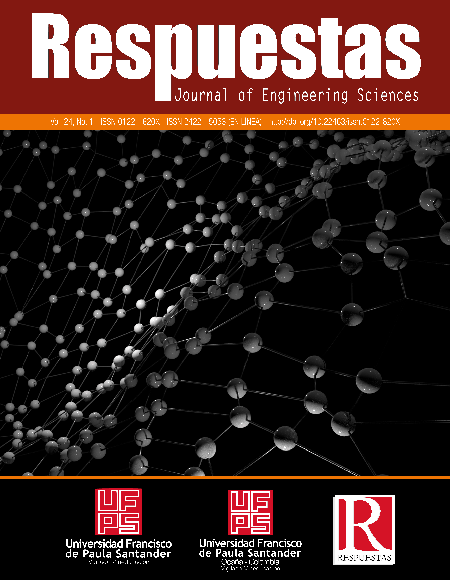Choice of instructional design for the development of a learning environment in blended mode
Elección del diseño instruccional para el desarrollo de un entorno de aprendizaje en modo mixto
Main Article Content
This article is a part of the research process for choosing an instructional design model within an educational institution of Higher Education in Colombia. It analyzes and reflects on different models of instructional design and before that sustains a definition and historical evolution of the different systems that have evolved the term of instructional design. With all the data and information required and on a basis consistent with the mission and vision of the institution Minute University Corporation of God, response and choice is given to a coherent model.
Downloads
Article Details
J, Claro-Vásquez. “Valoración del uso de la plataforma virtual Moodle como recurso pedagógico en la enseñanza universitaria de la informática”. Revista Perspectivas, 2(1), 43-56. 2017. Recuperado de: https://doi.org/10.22463/25909215.1284
E, D´Ors. Aprendizaje y heroísmo: “Lectura dada en la Residencia de Estudiantes la noche del 20 de enero de 1915”. Madrid. 1915.
J, Pérez, López, R, & Peralta, O. M. “Hacia una educación de calidad”. (2004)
R. V. Reiser, & J. V. Dempsey. “Trends and Issues in Instructional Design and Technology” (3a ed.). Boston: Pearson. 2011.
Shrock, S. A “brief history of instructional development”. En G. J. Angling (ed.), Instructional Technology: Past, Present, and Future (2.ª ed.) Englewood, IL: Libraries Unlimited Inc. pp. 11-19.1995.
R. V, Reiser, A history of instructional design and technology. En: R. A. Reiser y J. V. Dempsey. Trends and Issues in Instructional Design and Technology (3a ed.). Englewood Cliffs, NJ: Prentice Hall College Division. 2001.
G, Restrepo Prólogo. El Diseño Instruccional en la educación virtual. El diseño. 2013
F, Skinner. “Tecnología de la Enseñanza. Barcelona. España”. Editorial Labor S.A. 1982
Fundación Universitaria Católica del Norte. “En del Diseño Instruccional: Reflexiones y perspectivas en la Católica del Norte Fundación Universitaria”. Medellín, Ed. Coltejer. 2013. Recuperado de:http://www.ucn.edu.co/institucion/sala-prensa/Documents/diseno-instruccional-UCN-pdf.pdf.
M, Martín, C, Hernández-Suarez, & S, Mendoza-Lizcano, “Ambientes de aprendizaje basados en herramientas web para el desarrollo de competencias TIC en la docencia”. Revista Perspectivas, 2(1), 97-104. 2017. Recuperado de: https://doi.org/10.22463/25909215.1282
S. A, Ambrose, Bridges, M. W, DiPietro, M. C, Lovett, y M. K, Norman, “How Learning Works: Seven Research-Based Principles for Smart Teaching” (1.a ed.). Jossey-Bass. 2010.
A, Galvis. “Ingeniería de Software Educativo.Bogotá: Ediciones Uniandes”. 1992
C. U, Tobias. “The Way They Learn. Carol Stream, Illinois: Focus on the Family.” 1994.
A, Pritchard. “Ways of Learning” (2a ed.). Abingdon, Oxon; New York, NY: Routledge. 2009.
W, Dick. “The Dick and Carey model: Will it survive the decade?” Educational Technology Research and Development”. 44(3), 55–63. 1996.
D, Lebow. “Constructivist values for instructional systems design: Five principles toward a new mindset.” Educational Technology Research and Development, 41(3), 4–16. 1993.
M. D, Merrill. “Instructional Design Theory.”Englewood Cliffs, NJ. Educational Technology Publications. 1994.
A. Sharif y S. Cho, “Diseñadores instruccionales del siglo XXI: cruzando las brechas perceptuales entre la identidad, práctica, impacto y desarrollo profesional”, RUSC. Universities and Knowledge Society Journal, vol. 12, no. 3, pp. 72-86, 2015
R. C, Clark, y R. E, Mayer. “e-Learning and the science of instruction: proven guidelines for consumers and designers of multimedia learning”. (3a ed.). San Francisco, CA: Pfeiffer. 2011. Recuperado a partir de http://bit.ly/1yehyag
M, Arshavskiy. “Instructional design for eLearning: essential guide to creating successful eLearning courses”. S.l.: Your eLearning World.2013.
D. H, Andrews, y L. A. Goodson. “A comparative analysis of models of instructional design”. Journal of instructional development, 3(4), 2-16. doi:10.1007/BF02904348. 1980
G. S, Edmonds, R. C, Branch y P, Mukherjee. “A conceptual framework for comparing instructional design models”. Educational Technology Researchand Development, 42(4), pp 55-72. 1994.doi:10.1007/BF02298055
R. M, Branch. “Instructional design: the ADDIE approach”. New York: Springer. 2009.
D, Jonassen. “El Diseño de entornos constructivistas de aprendizaje En: Ch. Reigeluth (Eds). Diseño de la instrucción Teorías y modelos.Un paradigma de la teoría de la instrucción”. Parte I.225-249 Madrid: Aula XXI Santillana. 2000
J. E, Kemp. “Instructional design; a plan for unit and course development”. Belmont, Calif.: Fearon Publishers. 1971.
J. E, Kemp. “Planning, Producing, and Using Instructional Technologies”. (7a ed.). New York:Allyn & Bacon. 1997
G. R, Morrison, S. M, Ross, J. E, Kemp, y H,Kalman. “Designing effective instruction”. Hoboken,NJ: J. Wiley & Sons. 2004.
R, Heinrich, M, Molenda, J. D, Russell, y S.E, Smaldino. “Instructional Media and Technologies for Learning (7a ed.)”. Upper Saddle River, N.J:Prentice Hall. 1996.
R. D, Tennyson, y S, Dijkstra. “Instructional Design: Theory, research, and models”. Routledge.
P. Muñoz, “Modelos de Diseño Instruccional utilizados en ambientes teleformativos”, Revista Digital de Investigación Educativa Conect@2, no. 2,pp.29-59, 2011 [En línea]. Disponible en: Recuperado de: https://www.uv.mx/veracruz/revistaconectados/files/2016/05/Conect@2Numero2Abril2011.pdf







